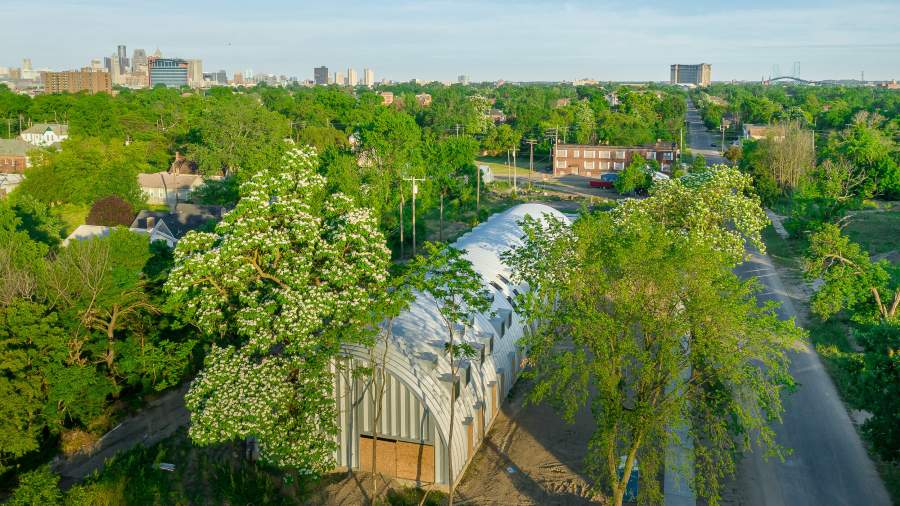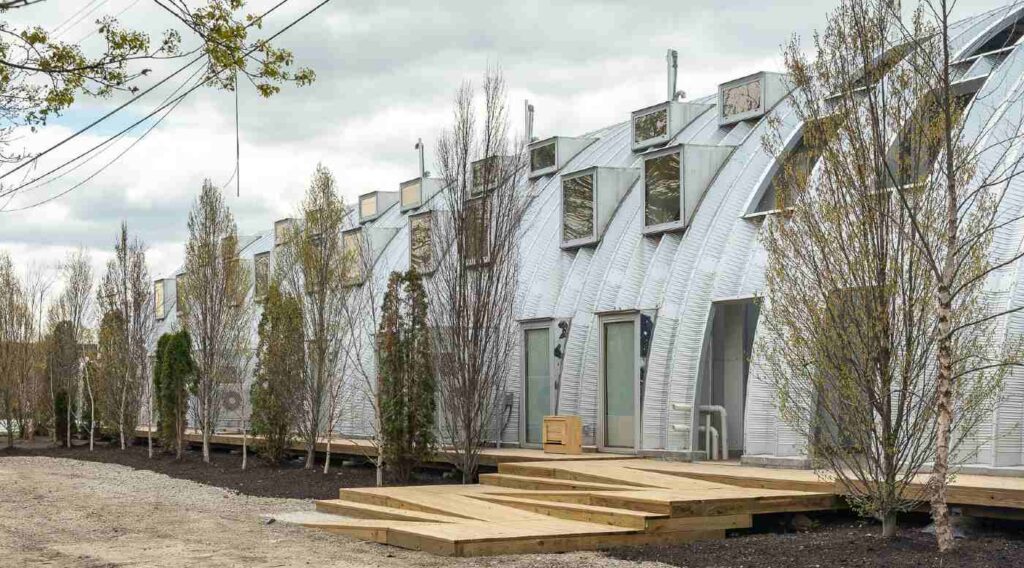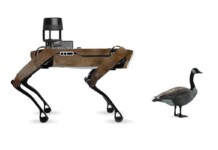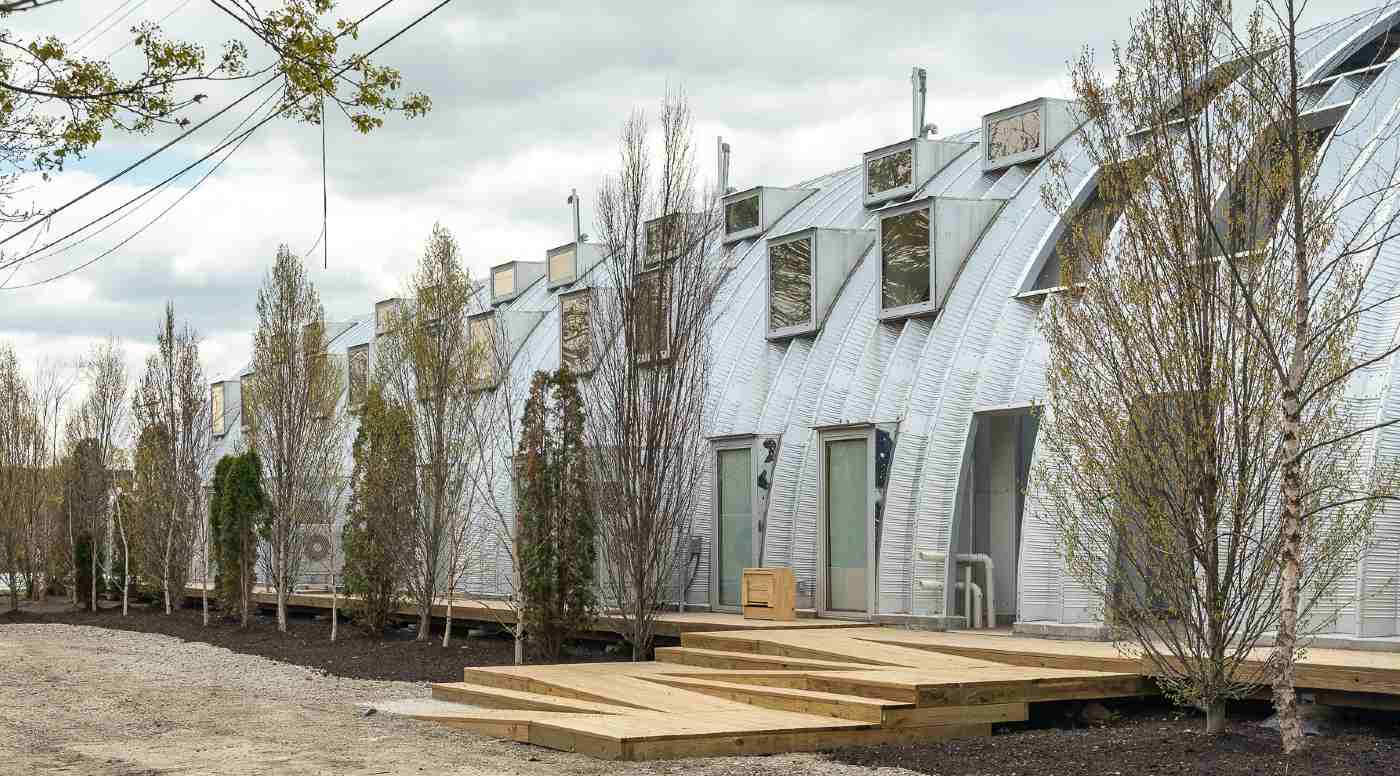Produced by the U.S. Navy for use in World War II, and now consigned primarily for storage use on farms, the Quonset hut is experiencing a rebirth within the residential neighborhoods of Detroit.

The long half-cylinder of corrugated steel, prefabricated in factories, was used by development company Prince Concepts to create a unique apartment building of eight high-ceilinged units for 30% less than comparable affordable housing in up-and-coming neighborhoods in the city.
“A Quonset hut isn’t a design, it’s a tool—think about it the same way you’d think about a brick, it’s a tool to achieve a purpose,” explains their website. “For Caterpillar, Prince Concepts challenged architect, Ishtiaq Rafiuddin, to create an 8 unit project within one massive hut, as a 9,000 square foot sculpture with 6 residences and 2 Live/Work spaces that anchors a public park where people can soak up the majesty of a new age monument.”
The Caterpillar’s designer and financier, Philip Kafka, has been using Quonset hut architecture to cut costs and offer unique housing and business opportunities in Detroit. Between the low cost of the hut, and of the land in the city, his projects offer perspective renters something totally unique in terms of price and style.
“With True North [another rental project that consists of live/work spaces, which gave rise to an art gallery and a yoga studio] we used the Quonset hut to create a sculptural community with public and semi-private outdoor nooks that residents and neighbors, alike, could enjoy, marvel at and marvel in,” Kafka explains.
In an interview with Fast Company, the Texas-born, former-NYC advertisement mogul describes his work as “Home-Depot architecture.” The Caterpillar rooms are between 750-1375 square feet, with walls pock-marked with symmetrical window arrangements, hardwood floors, and a 23-foot high vaulted ceiling.

“You get a sunrise view in your bedroom and a sunset view in your living room. That was intentional. It’s all about light, this project,” Kafka explained. “The real benefit isn’t that the Quonset hut lets me build a project so inexpensively, it’s that it lets me give people extremely high-quality space for a reasonable price.”
MORE: These Floating Islands Will Form a ‘Parkipelago’ in Copenhagen’s Harbor
In addition, the landscape is bespoke, and features a wrap around deck, gardens, and forty trees. The project was fully leased months before it was officially finished.

With raw wood, steel, pipes, and other construction materials fully visible inside, the Caterpillar, and True North for that matter, were designed with artists in mind, whose creativity would be able to be unleashed upon the raw space.
RELATED: The New Green Building Revolution Uses Timber to Build ‘Plyscrapers’ That Save Tons of CO2
Kafka says he doesn’t want to become the Quonset hut guy, only that it allows him to build bold spaces and buildings on the cheap side. As he mentioned earlier, they are merely a tool for him to do a job, which is hopefully bring a bit of creative artistry to dilapidated neighborhoods of the Motor City.
SHARE This Stunning Design With Friends on Social Media…




















